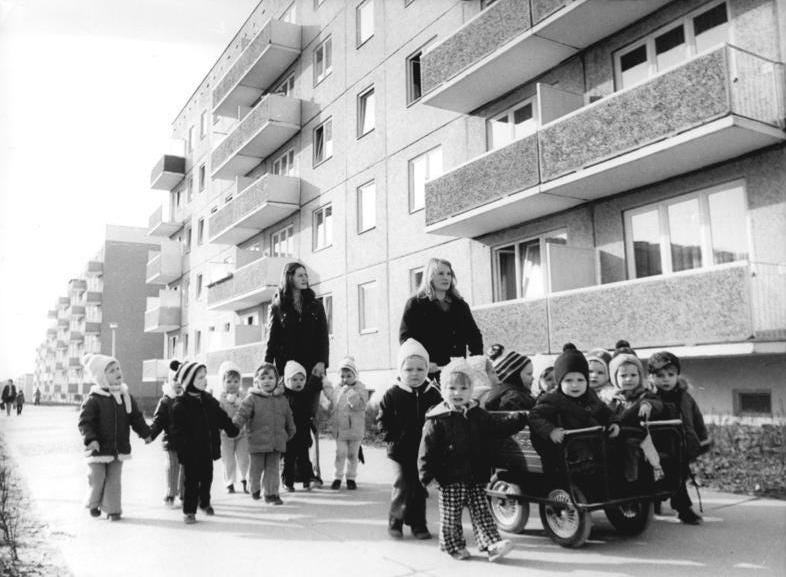Who wants to live in a socialist prefab?
Desirable, rejected, revamped. Prefabs have come full-circle
On a recent trip to Germany, I was interviewing a professional musician about his work. At one point, he laughed and said, “I’m glad that I can afford not to work when I need time to think or I want to go travelling with my daughter. Sometimes, I just take time out. You know why I can do that?” I shook my head. “Because I live in a trusty old WBS 70 and my rent is cheap.”
At the mention of those letters and numbers, images flooded my mind. Balconies. Linoleum. Windowless bathrooms. Green spaces. Grey concrete. Home. WBS 70 stands for “Wohnungsbauserie 70”, one of the most common types of prefabricated housing built by East Germany.
The socialist state, keen to build back from the destruction of war but limited in resources and materials, undertook one of the most comprehensive public housing projects in history, developing a Lego-like system based on Bauhaus principles whereby prefabricated slabs can be put together in different forms to make housing blocks of different shapes and sizes.
The WBS 70 that my interviewee occupies in central Dresden today came later – as the name implies, from the 1970s onwards. I grew up in an earlier incarnation – we still heated our flat and water with coal-fired stoves. But the newer blocks were thoroughly modern with centralised heating systems and decent insulation. My grandparents lived in a WBS 70 block, the first residents to move in after completion in the late 1980s. Fewer people want to live in them today, not least because the estates are now often associated with poverty.
Keep reading with a 7-day free trial
Subscribe to ZEITGEIST to keep reading this post and get 7 days of free access to the full post archives.



